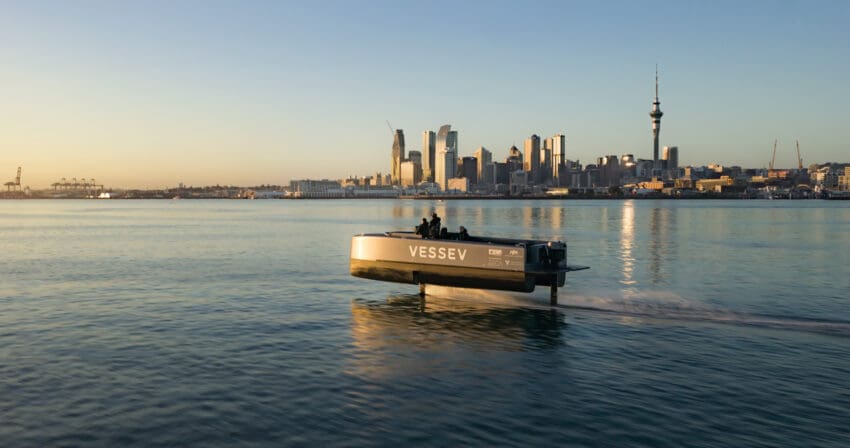World-first electric tourist hydrofoil launched
A New Zealand ferry operator is to become the first in the world to operate a fully electric hydrofoil vessel for tourist trips later this year.
Fullers360 is set to put the newly developed Vessev VS-9 into service in Auckland, making it the city’s first electric passenger vessel and the world’s first hydrofoiling tourism vessel.
The VS-9 has been developed to deliver a smoother and quieter means of transport than traditional tourist boats and its creators say it will bring new possibilities to marine tourism.
The nine-metre VS-9 will transport up to 10 passengers at up to 25 knots and has a range of 50 nautical miles thanks to state-of-the-art hydrofoiling technology inspired by America’s Cup racing vessels.
It is currently undergoing sea trials out of Auckland, and the first VS-9 will be certified this year before entering commercial operation with Fullers360.
Eric Laakmann, Vessev CEO, said: “There are 33 million vessels in the world today with sustainable vessels representing the smallest fraction. Through significant enhancements in efficiency, hydrofoiling will play a key role in this once-in-a-generation shift.
“Traditionally, larger vessels are required to deliver a comfortable passenger experience as they can handle the impact of waves and wake. By flying above the waves the VS-9 delivers a large vessel experience on an agile platform that can be berthed and charged in nearly any marina.”
“The VS-9 will enable thousands of new routes around the world that are currently impractical for traditional vessel.”
Laakmann added that the technology of the VS-9 could be scaled up and Vessev was already working on a 100-passenger vessel named the VS-18.
Fullers360 CEO Mike Horne commented: “It’s our intention for Fullers360 to be 100% electric or hydrogen operated by 2040 and foiling is absolutely a part of that vision for us.
“Auckland is quickly becoming a case study for the adoption of green technology and the IP within NetZero Maritime is playing a fundamental role in accelerating the understanding and adoption globally. Seeing this project come to fruition reinforces our move to establish NetZero Maritime to enable the commercialization of new technology such as the VS-9.”
Vessev says that the VS-9 is so efficient it can be charged using existing electric charging infrastructure available in most marinas, but will be able to take advantage of high-speed DC charging as it is introduced, bringing recharge times of up to 0.8 nautical miles per minute.
Laakmann added: “Our objective is to break down the barriers to adopting electric vessels. From the outset, our goal was to design a commercial electric vessel that can use the charging capacity already available in many marinas to run serious commercial businesses. Through a combination of size and efficiency, we have succeeded with the VS-9.
“During sea-trials we have been running up to three test sessions a day using a standard AC three-phase connection. We think that operators and tourism businesses around the world will see the benefit in that.”
